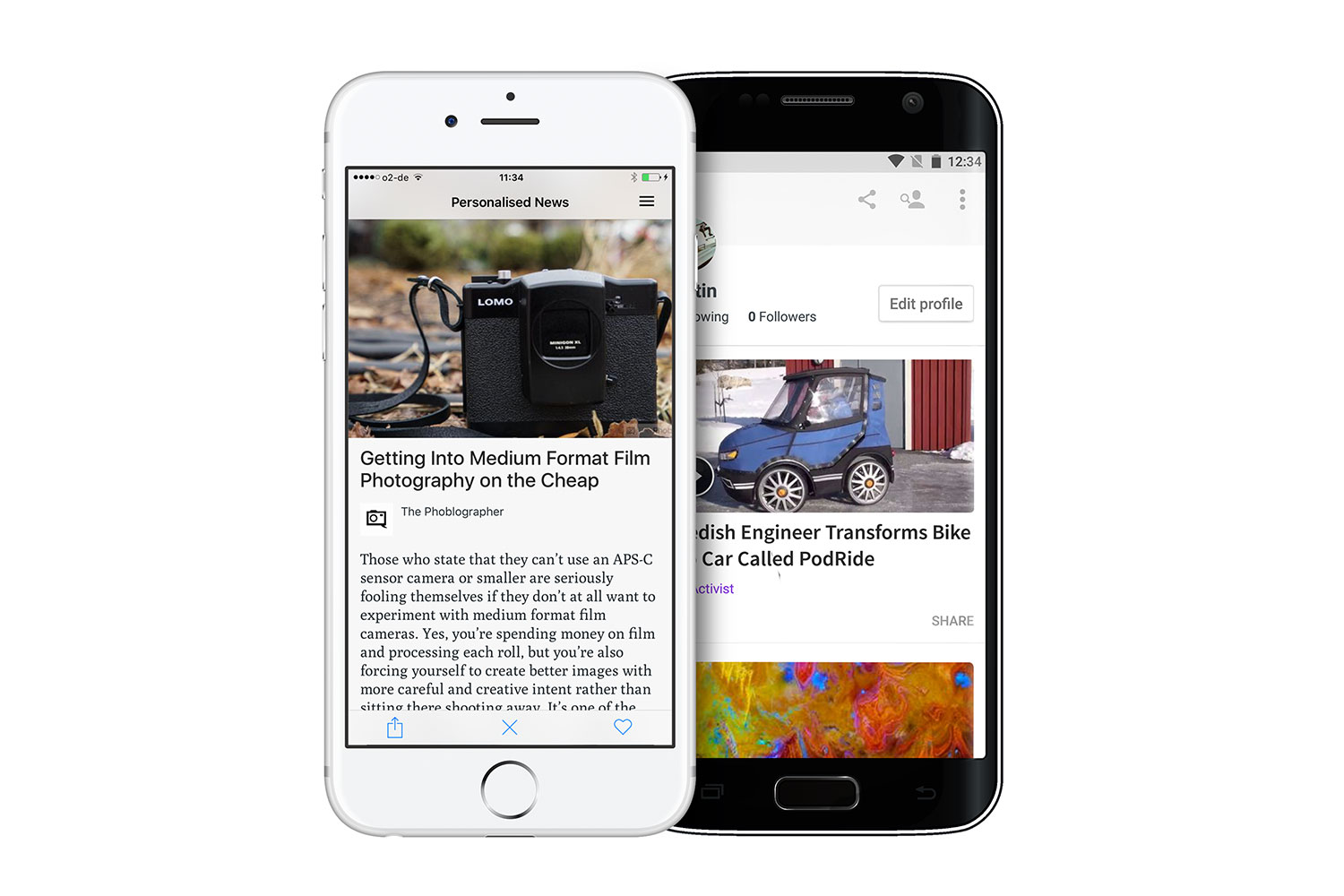Despite the millions of dollars that companies such as Facebook, Twitter, Google, and Flipboard have invested in news aggregation technology in recent years, finding stories you actually want to read can be a serious chore.
Startup Lumi hopes to change all of that with its free iOS and Android app, Lumi News. Without needing to enter in any personal data, the app learns about your personal tastes with a Tinder-like interface. You simply swipe your finger right to like a story or left to skip it. It also asks for access to your social media feeds, so it can make deductions based on your personal history of interests and likes.
Rather than headlines and a paragraph of multiple stories to read, the app gives you the entire story – one at a time.
Rather than giving you headlines and a paragraph of multiple stories to read, the app gives you the entire story – one at a time. Martin Stiksel, co-founder of Lumi, told Digital Trends an early version of the app did take the multiple headlines route, but it quickly became evident that it simply created more clutter.
Much like trying to make sense out of your non-stop Twitter feed with information overload, the entire goal of Lumi News (the name is a play on shedding light on news) is to simplify everything to the point that your Mom can sit down and instantly start reading.
“The tech space has been looking for a better discovery and navigation device,” Felix Miller, co-founder of Lumi told Digital Trends. “Once you install Lumi News it figures out ‘by magic’ what you want and it gives you content you’re interested in.”
Data science cuts down on the noise
Lumi has that magic down to a science, literally. Three of the London-based company’s 10 employees are data scientists. And Lumi’s co-founders were among the founders of music curation company, Last.fm, which CBS purchased for $289 million back in 2007.
Miller said the app uses crowd sourcing by collecting data from all of its users’ Twitter feeds and looks at 200 million articles every day. The Top 100,000 articles are curated on a daily basis. The app looks at over 40,000 different outlets, ranging from the big online publishers to niche blogs. Gated or walled news outlets such as Variety or The Wall Street Journal aren’t available through the app, since it connects directly to the source. That way, Lumi gives media companies the all-important traffic.
Once a story enters the app, it continues to live there as long as readers keep liking it. The app also allows readers to submit their favorite stories, which means Digital Trends content can trend within this ecosystem if you and your friends make a few swipes to the right. (And we shamelessly hope you do!)
The company has been beta testing its data-driven technology with 120,000 Android users for the last year, and the results are pretty impressive. The app currently has over 50,000 monthly unique and they’re spending an average of six minutes per session reading, while coming back twice a day.
“People get addicted to it,” Stiksel said. “It’s like a channel you can always tune into. There’s a story that’s always waiting for you to read based on your personal interests.”
A growing user base
Half of all people who installed the app, which includes those who didn’t even open it, end up using it in the first month. But by the second month of use, that usage number rises to 70 percent thanks in part to push notifications the app sends you twice a day with recommended articles. This option can be turned off for those who just want to read at their own time and pace.
“We discovered that 20 percent of our user base comes back every day, often several times a day,” Miller said.
Stiksel said that a survey that’s currently running with beta users found that Lumi News is changing the way people search because content is coming directly to them.

“People are using Flipboard and Google News less,” Stiksel said. “The only thing we can’t compete against is Facebook. We can’t compete with baby pictures and cute puppies.”
Even before the debut of Lumi News today on Apple devices and the official launch on Google Play, Lumi already had at least one user in every country around the globe. Stiksel said it only takes 30 users in a market to “claim” that area. This allows the app to feed relevant local info to users out of the gate. With more users downloading the app, Miller said the data science will kick into high gear.
At the end of the day, Lumi’s secret sauce could be the company’s approach.
“A lot of companies are trying to do a lot of things,” Miller said. “We’re trying to do one thing really well.”
We tried Lumi News early, and it is a very seamless experience. It learns quickly, and iIt’s a great way for fans of specific hobbies, whether it’s model railroads or video games, to instantly find a never-ending stream of recommended stories on their favorite topics. Those swipes to the left also are a godsend, as they can immediately erase topics, or even people (like Donald Trump) that you’re just not interested in reading about.
If you want to try Lumi News, you can download it on the Google Play Store and the iOS App Store now.
Editors' Recommendations
- I’ve used an iPhone for 14 years. The Pixel Fold made me want to stop
- Apple Health vs. Samsung Health? What I learned after using both
- Learn from my mistakes: Don’t settle for a cheap tablet like the Nokia T20
- What will your smartphone look like in 2025?
- Facebook wants to ‘strengthen democracy’ with a news tab. What could go wrong?








